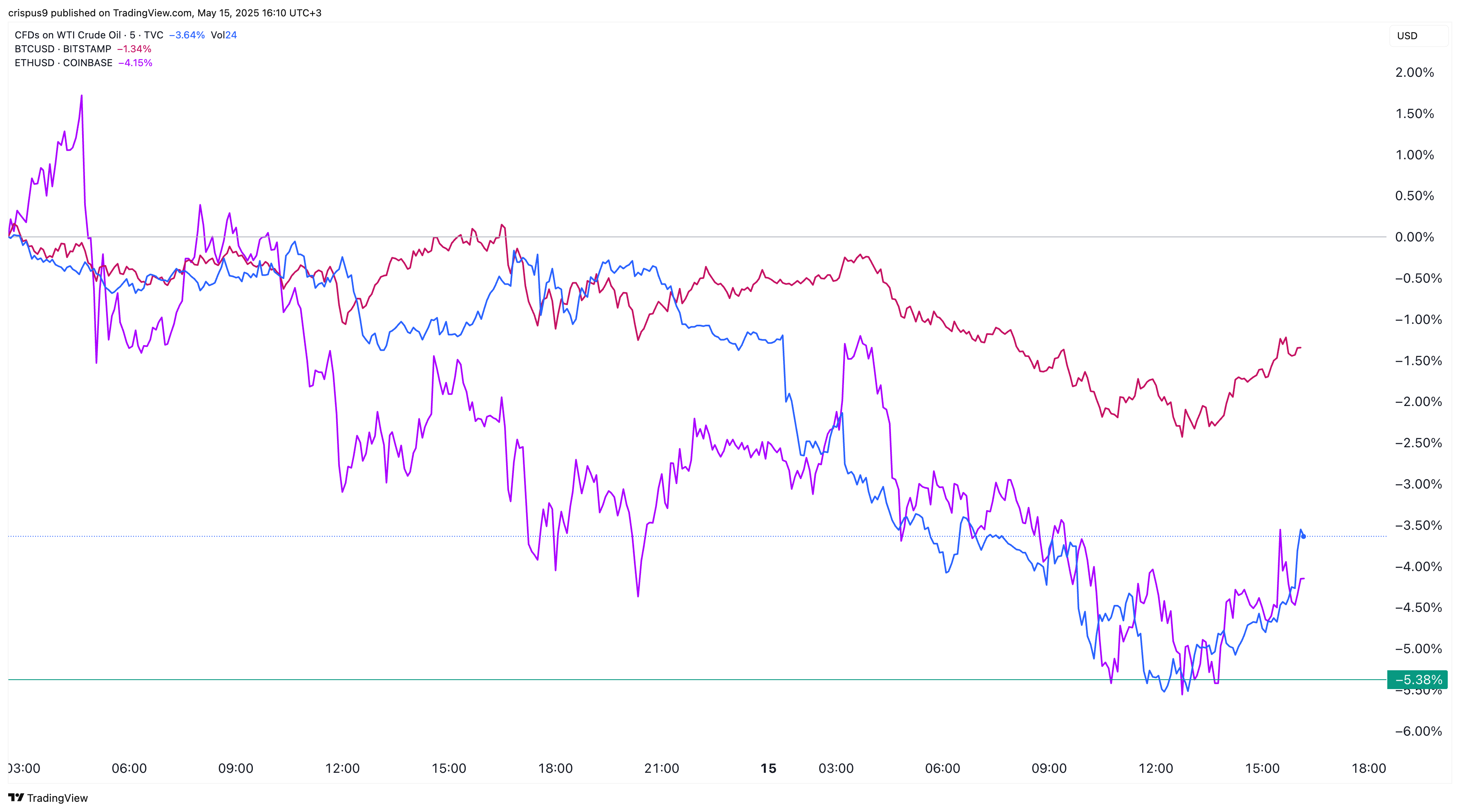Crude Oil’s Nosedive Fuels Crypto Rally—Here’s Why Traders Are Piling In
When oil prices tank, crypto markets tend to spike. It’s not magic—it’s capital rotation. Here’s the breakdown.
The petrodollar shuffle:
As crude crashes, traditional energy investors flee to high-growth assets. Bitcoin and Ethereum become liquid safe havens—ironic, given their volatility.
Inflation hedge 2.0:
With oil dragging down fiat currencies, crypto’s hard-capped supply looks increasingly attractive. Even Wall Street dinosaurs are quietly rebalancing portfolios.
Mining gets cheaper:
Lower energy costs slash operational expenses for proof-of-work chains. Miners hodl instead of selling—reducing market supply.
Of course, some hedge funds will still claim this is ‘irrational exuberance’—right before quietly front-running the next pump. The more things change…
 Bitcoin Ethereum, crude oil price chart | Source: crypto.news
Bitcoin Ethereum, crude oil price chart | Source: crypto.news
How falling crude oil prices may boost the crypto market
A potential catalyst for Bitcoin and other altcoins is the ongoing crash in crude oil prices. Brent, the international benchmark, fell for the second consecutive day, reaching a low of $63. Similarly, West Texas Intermediate declined to $60.20, its lowest level since May 9. Both benchmarks have fallen more than 25% from their highest levels this year.
Prices dropped as Donald TRUMP hinted that his administration was making progress in indirect talks with Iran. A potential agreement would see Iran halt its nuclear program in exchange for sanctions relief. A likely outcome would be Iran increasing oil exports at a time when global supplies are already rising. At its last meeting, the OPEC+ cartel voted to increase production for the second consecutive month.
Falling crude oil prices could support the crypto market by lowering gasoline costs, which would reduce inflation. In a post on Wednesday, the White House noted that gasoline prices had declined for three consecutive months.
Lower inflation would, in turn, give the Federal Reserve room to start cutting interest rates—an outcome that would benefit cryptocurrencies and other risk-on assets. For example, bitcoin and most altcoins surged in 2020 and 2021 as the Fed aggressively slashed rates.
Economic data released this week showed that US inflationticked lower in April. The headline Consumer Price Index dropped from 2.4% in March to 2.3%, while the Core inflation remained at 2.8%.
Trade truce to boost crypto and stocks
The other macro catalyst for the crypto market is the recent trade truce between the US and China. This truce has led the two countries to lower their tariffs dramatically. The US lowered its levies from 145% to 30%, while China brought its levies from 125% to 10%.
The U.K. also reached a trade agreement with the U.S. last week and is negotiating similar deals with other countries, including the European Union.
As a result, analysts now believe that trade and recession risks have subsided. In a note on Wednesday, Goldman Sachs’ David Kostin lowered his recession odds and boosted his S&P 500 forecast to $6,100 from $5,100.
A strong stock market WOULD also benefit cryptocurrencies due to the positive correlation that often exists between the two asset classes.

